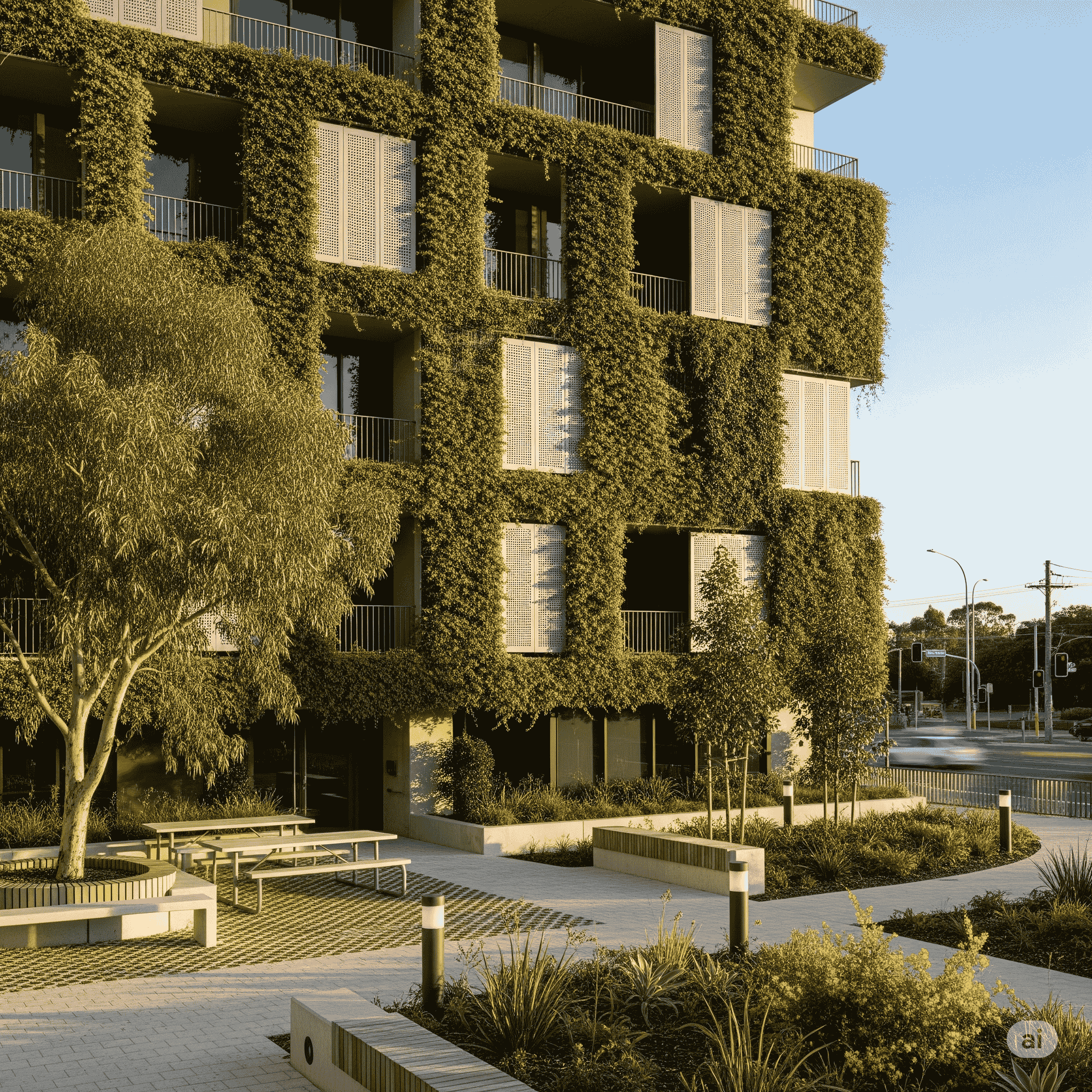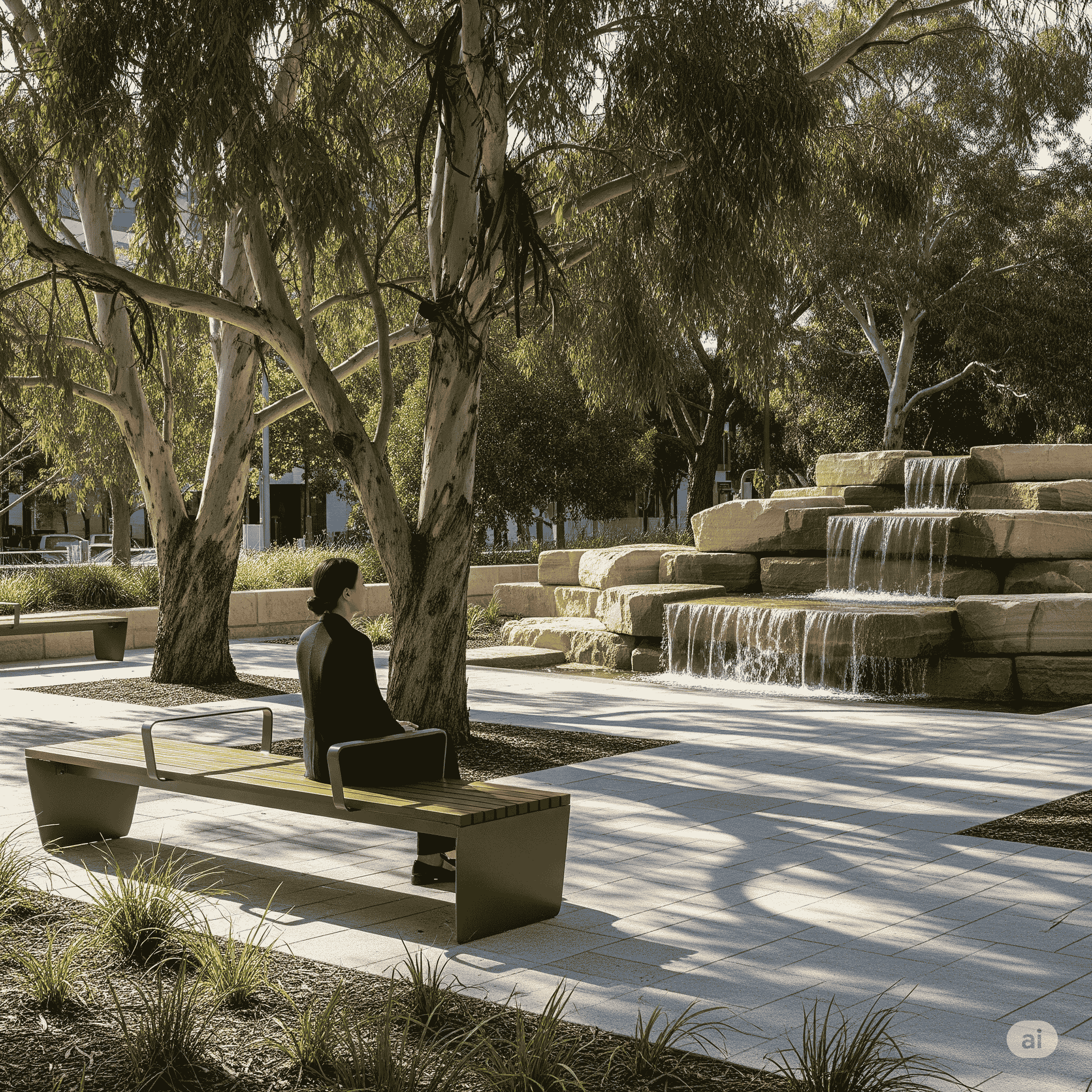
Urban Design Services That Meet Australian Green Building Standards
Discover how urban design services help meet Australian green building standards. Learn how Smart Planning and Design supports sustainable, compliant projects.
read more

When we think of urban planning, our minds often jump to skylines, green spaces, and transport networks. Yet, there is an entire, invisible layer of the city that profoundly impacts our well-being: the soundscape. An intentional and well-managed soundscape can evoke a sense of place, foster relaxation, and even enhance public safety. Conversely, a chaotic and noisy environment can lead to stress, health issues, and a reduced quality of life. This is why a new, critical focus on urban soundscaping is emerging as a key component of Smart Planning Australia.
Urban soundscaping is the art and science of intentionally designing and managing the auditory environment. It’s a shift from simply fighting noise pollution to actively curating a positive and harmonious acoustic experience. This means more than just blocking out unwanted sounds; it involves enhancing the desirable ones, such as the rustle of leaves, the gentle flow of water, or the hum of a vibrant public space. For a deep dive into this topic, we explored the foundational principles in our article, The Role of Urban Soundscaping.
The goal is to create a multi-sensory city that not only looks beautiful but also feels tranquil and welcoming. In a country as vast and diverse as Australia, with its bustling metropolises and serene coastal towns, this approach is more relevant than ever.
Creating a well-curated soundscape requires an integrated approach that is central to Smart Design & Planning Australia. It’s not a single solution, but a combination of architectural, natural, and technological interventions.
Natural Solutions: The simplest and often most effective soundscaping tools are found in nature. Strategic placement of trees, shrubs, and green walls acts as a natural buffer, absorbing and deflecting traffic noise. Additionally, water features—from fountains in a public square to a constructed creek in a park—can provide a pleasant, masking sound that drowns out the unpleasant background hum of the city. The integration of nature-based solutions is a critical part of creating a harmonious environment. For more on this, you can explore the principles of designing for biophilic cities.
Architectural Interventions: Urban planners and architects are increasingly using sound-sensitive design principles. This includes designing building facades with sound-absorbing materials, orienting buildings to shield public spaces from busy roads, and incorporating quiet courtyards or atriums into large developments. In residential areas, acoustic barriers and strategic landscaping can significantly reduce noise exposure for residents, transforming their living experience.

In the modern urban landscape, technology plays a pivotal role in designing a better auditory environment. A Smart City Australia leverages data and connected devices to understand, manage, and even enhance its soundscape.
Acoustic Sensor Networks: Just as smart cities use sensors to monitor air quality and traffic, they can deploy networks of acoustic sensors to measure and map noise pollution in real-time. This data provides planners with an accurate, dynamic picture of a city’s auditory health. It helps identify hotspots of noise pollution, allowing for targeted interventions, whether that’s rerouting traffic, enforcing noise ordinances, or implementing sound-mitigating designs.
AI-Powered Sound Analysis: Advanced AI can analyse the sounds captured by these sensors to differentiate between traffic, construction, human speech, and natural sounds. This allows for more nuanced planning, enabling authorities to address specific issues rather than applying a blanket solution. It also helps to ensure that efforts to reduce one type of noise don’t accidentally eliminate another, more desirable sound.
Interactive Soundscapes: Beyond simple mitigation, technology can be used creatively. Interactive public art installations can react to the presence of people, generating soothing sounds or musical tones. Smart parks can use ambient sounds or pre-recorded nature sounds to create a more immersive and calming experience, particularly in dense urban areas where natural sounds are scarce.
Ultimately, designing for a healthier auditory environment is a key part of designing for psychological well-being. Read our article to learn more about the broader strategies for integrating mental well-being into city planning.
While the term "urban soundscaping" may be new, the principles are already being applied in various Australian projects. In new master-planned communities, developers are prioritising design that shields residential areas from commercial zones and major roadways. Public parks and playgrounds are being designed with topography and landscaping to create quiet zones where families can relax without the constant intrusion of city noise.
A prime example is the thoughtful integration of the 15-minute city concept, where designers are creating mixed-use hubs that are inherently less reliant on high-speed traffic, which is a major source of noise pollution. By focusing on walkability and local access, these designs naturally reduce the auditory chaos that plagues many larger cities, creating a more pleasant and functional experience for everyone.

The future of Australian cities is not just about being smart; it’s about being mindful. By moving beyond a purely visual focus and embracing the principles of urban soundscaping, we can create places that are not only technologically advanced but also deeply human. This innovative approach to Smart Planning Australia ensures that our urban environments support the health and happiness of their inhabitants, fostering stronger, more connected communities for generations to come.
At Smart Planning & Design, we understand that true urban excellence goes beyond the blueprints. Our team specialises in creating innovative and sustainable solutions that consider every aspect of the urban experience, including its soundscape. We work with developers, local governments, and architects to design environments that are not just efficient but also serene and enriching. Our expertise in Smart Planning Australia and Smart Design & Planning Australia can help you transform your next project into a truly exceptional space.
Contact us today to discuss how we can help you create a city that sounds as good as it looks. We are ready to bring our expertise to your vision and shape the future of urban living.

Discover how urban design services help meet Australian green building standards. Learn how Smart Planning and Design supports sustainable, compliant projects.
read more

Discover the benefits of mixed-use developments in town planning Australia. Learn how they boost convenience, sustainability, and community connection.
read more

Discover why feasibility studies are essential in town planning Australia. Learn how they save time, reduce risks, and improve approval chances.
read more